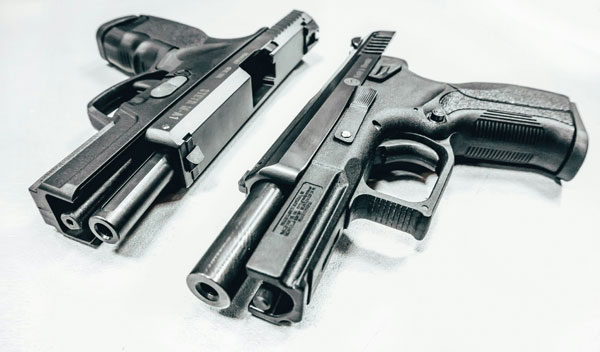Supreme Court rules ghost guns as firearms

[Two black pistols. Photo Credit: Unsplash]
The U.S. Supreme Court has ruled that ghost guns are legally classified as firearms under the case formerly known as Garland v. VanDerStok, now Bondi v. VanDerStok, meaning these weapons now require background checks and serial numbers.
The case, argued before the Supreme Court on October 8th, 2024, focused on whether the Bureau of Alcohol, Tobacco, Firearms and Explosives (ATF) had the authority to regulate ghost guns through its Final Rule.
The ATF’s Final Rule was signed by then-Attorney General Merrick Garland in 2022.
This Final Rule redefined “frames”, “receivers”, and “firearms” as listed in the Gun Control Act of 1968.
Gun interest groups challenged these definition changes, claiming the ATF was exceeding its statutory authority in its attempt to regulate ghost guns.
This issue was brought to the United States Court of Appeals for the Fifth Circuit by plaintiffs Jennifer VanDerStok and Michael Andren, supported by Tactical Machining, LLC and Firearms Policy Coalition.
The plaintiffs asserted they were not fighting for the firearms industry, but were instead regular, patriotic Americans attempting to protect their Constitutional rights and preserve their rightful liberties.
The Fifth Circuit ruled in favor of the plaintiffs, establishing that the ATF did not have the authority to change the Gun Control Act through its Final Rule.
This case was subsequently brought to the Supreme Court, with Garland et al. as the petitioner and VanDerStok et al. as the respondent.
Granted certiorari on April 22nd, 2024, the case was argued on October 8th, 2024, and after five months, was decided on March 26, 2025, in favor of the petitioners.
With the transition from Merrick Garland to Pam Bondi as Attorney General after the Trump administration replaced the Biden administration in 2025, Garland v. VanDerStok was renamed to Bondi v. VanDerStok, although it is still commonly referred to as Garland v. VanDerStok.
The 7-2 majority opinion effectively overturned the Fifth Circuit’s ruling and upheld that ghost guns and gun kits must follow the same regulations as regular, assembled firearms.
This decision comes as a surprise to many observers, given that the Supreme Court has had a 6-3 conservative majority since 2020.
With this decision, gun kits and unconventional methods of obtaining firearms now require a background check and serial number like standard guns.
The upholding of the ATF’s Final Rule may help combat the exponentially increasing number of untraceable guns and crimes committed with them.
The two justices who voted in favor of the respondents and against the government were Justice Clarence Thomas and Justice Samuel Alito, both of whom are known as being among the most conservative members of the Supreme Court.
Both justices wrote their own dissenting opinions.
Justice Clarence Thomas argued in his dissent that firearm kits should not be regulated as it could “open the door to rules on other popular weapons.”
This aligned with many pro-gun arguments, expressing a fear of losing the American right to own firearms as written in the Second Amendment.

- Yunseul Oh / Grade 11 Session 8
- Westview High School

![THE HERALD STUDENT REPORTERS [US]](/assets/images/logo_student_us.png)
![THE HERALD STUDENT REPORTERS [Canada]](/assets/images/logo_student_ca.png)
